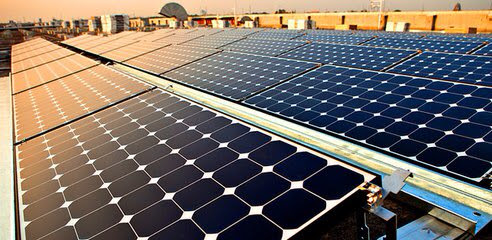When a British energy minister argued that wind turbines generate a "mere trickle of non-storable energy", some eyebrows were raised.
Sure, there are challenges to shifting to clean energy, but with renewables providing an ever larger slice of the energy pie and with a number of studies showing 100% renewable energy is possible with today's technologies, his arguments were at best outdated, and at worst a severe case of misrepresentation and denial.
Now Science Daily reports on a study from the University of Delaware and Delaware Technical Community College adds weight to this thesis, suggesting that wind and solar could power the grid 99.9% of the time if combined with a certain amount of energy storage and fossil fuel backups for the rare occasion that clean energy alone was not enough.
Using computer modeling, the researchers explored 28 billion combinations of renewables and storage mechanisms, each tested with four years of weather and energy demand data. The results were encouraging, and because the study focused not just on matching supply with demand, but rather achieving the most cost effective solutions, it revealed some rather useful findings. Most notably, that it is cheaper to over-build generation capacity to a point where there is excess supply on sunny or windy days, and still an adequate direct supply when demand is high but wind or sun are in short supply. Storage was still an important part of the puzzle however, as Science Daily explains:
During the hours when there was not enough renewable electricity to meet power needs, the model drew from storage and, on the rare hours with neither renewable electricity or stored power, then fossil fuel. When there was more renewable energy generated than needed, the model would first fill storage, use the remaining to replace natural gas for heating homes and businesses and only after those, let the excess go to waste.
The study used cost estimates for renewables in 2030, that showed wind and solar at roughly half the installation price they are today, with maintenance costs remaining roughly constant. As far as I can tell, it didn't even get into the potential for radical energy and resource savings through ideas like embracing bright green cities or dematerializing the economy either.
Having just got into a heated twitter "discussion" with another naysayer who feels that fracking to avoid economic calamity is our only option, I must once again call BS. More


No comments:
Post a Comment